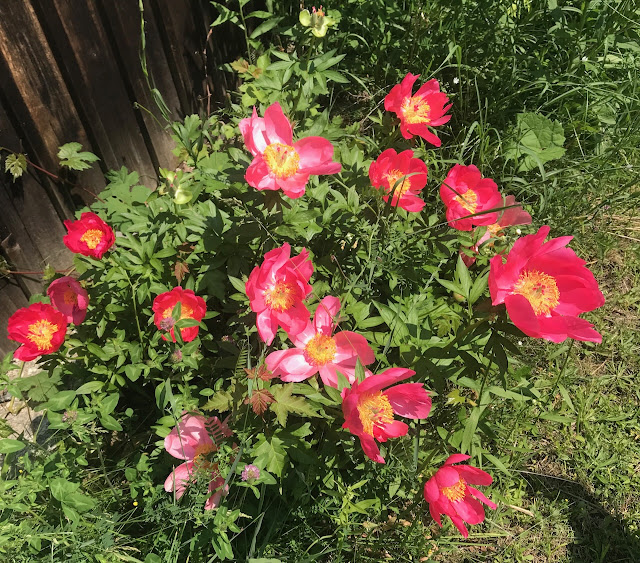Our hosts in Ottawa are my ikebana friend, Leonora, and her husband Richard.
Last weekend they took us to Québec city. In the photo with Laurie, we were at old restaurant where we had our first light lunch to recover from the bus journey. I was extremely surprised to find that old Québec was a small intact walled European style city, established about 400 years ago.
Towering over the lower city are the walls of the upper city, dominated in this view by the hotel Fairmont Chateau Frontenac. Leonora and I are in the foreground.
This street in the lower city, with a canopy of open umbrellas, looked quite whimsical and charming.
The first part of this very large hotel was opened in 1893 and has been extended on three occasions. It has 610 rooms. This view from the Dufferin Terrace gives an excellent idea of the current size of the building. The chain of chateau-style hotels was established by the Canadian Pacific Railway. It was created because revenue from passengers contributed significantly to the railway's profitability, and travellers needed somewhere to stay.
An earlier building of particular interest to Laurie is what is now the Morrin Centre. What you see was first built in 1808 on the site of the previous French barracks (and sometime prison) of 1712. From 1808 until 1867 the building was the public prison of the city. It then became Morrin College, the first centre of higher education in the province that conducted its teaching in English. In 1868, the Literary and Historical Society moved its library into the building.
The English Library at the Morrin Centre is a key location in a novel by the Canadian detective novel writer Louise Penny entitled "Bury Your Dead". Laurie was interested in the parallels between this Victorian period institution and Melbourne's Athenaeum Library.
Like all cities, Ottawa has plenty of wildlife.
None the less, I was quite surprised to see this Canada goose sitting on a clutch of eggs in the ornamental garden of a restaurant terrace. It was within arms reach from the nearest table.
A week later, we found the goose had gone. However, we then spied the only surviving chick in the canal, being very closely supervised by both of the parents.
The weather has warmed up significantly since we arrived two weeks ago. Flowers are now in abundance. In particular I have noticed there are large quantities of Peonies in the gardens that we have visited.
This mass of Peonies was in the Central Experimental Garden near the Arboretum in Ottawa.
These pennies are in the garden of my ikebana friend, and ceramicist Janet Keefe.
On the right Janet, in her garden, with fellow ikebanist, Gail.
Now to ikebana
The first two photos are from Hokaido.
Andy made this slanting nageire ikebana with unidentified variegated branch material, and yellow Tulips.
Aileen made this freestyle ikebana in her newly-acquired modern basket. She has used tulip leaves and stems (without the flowers) and Japanese Lantern Alkekengi oficinarum seed pods.
My own modest Ikebana is a cluster of pink Alstroemeria placed in a small vase. The stem of the flower cluster sits on one edge of the vase mouth creating an open space above the rim. This gives a feeling of lightness to the placement. The vase has a dark brown band on the visible surface. Only a small amount of this colour is seen on the reverse side.
The vase was a gift from its maker, Janet Keefe.
Greetings from Christopher
15th June 2025














No comments:
Post a Comment